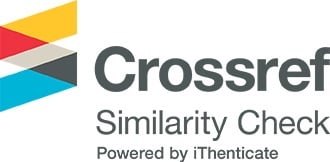Hệ thống quản lý đơn hàng cho doanh nghiệp nhỏ và siêu nhỏ
Các tác giả
DOI: https://doi.org/10.59294/HIUJS.34.2025.751Từ khóa:
Quản lý đơn hàng, doanh nghiệp nhỏ và siêu nhỏ, sơ đồ chức năng doanh nghiệp, Sơ đồ luồng dữ liệuTóm tắt
Thương mại điện tử và cách mạng 4.0 mở ra cơ hội lớn nhưng cũng gây khó khăn cho doanh nghiệp nhỏ và siêu nhỏ trong quản lý sản phẩm, đơn hàng và tồn kho do thiếu công cụ hỗ trợ. Các giải pháp quản lý như SCM, CRM, ERP thường quá đắt đỏ, nên cần một công cụ quản lý đơn hàng (OMS) chuyên biệt để tối ưu hóa quy trình cho các doanh nghiệp này. Nghiên cứu này thiết kế và phát triển một hệ thống quản lý đơn hàng với dữ liệu từ nhiều nền tảng thương mại điện tử, nhằm tạo ra giải pháp đơn giản, trực quan và thân thiện với người dùng. Hệ thống quản lý đơn hàng được thiết kế dựa trên các lý thuyết và quy trình thiết kế hệ thống và quản lý hệ thống thông tin. Trước tiên, nghiên cứu tìm hiểu hiện trạng thị trường thông qua tra cứu, phỏng vấn và khảo sát để xác định các yêu cầu của hệ thống. Sau đó xây dựng các chức năng hệ thống, biểu thị qua biểu đồ BFD, phân tích luồng thông tin DFD và phân tích các trường hợp sử dụng hệ thống. Cuối cùng là thiết kế cơ sở dữ liệu, đồng thời thiết kế giao diện hệ thống thân thiện với người dùng. Nghiên cứu đóng góp cho doanh nghiệp nhỏ và siêu nhỏ một giải pháp quản lý đơn hàng hiệu quả.
Abstract
E-commerce and the 4.0 industrial revolution present significant opportunities but also challenges for small and micro-enterprises in managing products, orders, and inventory due to a lack of supporting tools. Management solutions like Supply Chain Management (SCM), Customer Relationship Management (CRM), and Enterprise Resource Planning (ERP) are often too expensive, highlighting the need for a specialized Order Management System (OMS) to optimize processes for these businesses. This study focuses on the design and development of an OMS that integrates data from multiple e-commerce platforms, with the goal of providing a straightforward, intuitive, and user-friendly solution. The system is developed based on established theories and methodologies in system design and information management. Initially, the research examines the current market landscape through studies, interviews, and surveys to identify system requirements. Subsequently, the system's functionalities are constructed, and represented through a Block Flow Diagram (BFD), and the data flow is analyzed using Data Flow Diagrams (DFD) alongside system use case analysis. Finally, the database is designed, and a user-friendly interface is created. This study aims to deliver an effective order management solution tailored for small and micro enterprises.
Tài liệu tham khảo
[1] W. Sardjono and W. D. Nuriana, "Business Opportunities in Industrial Revolution 4.0 through 9 (nine) E-commerce Marketing Strategies," Social Economics Ecology International Journal, vol. 4, no. 2, pp. 53-60, 2020.
DOI: https://doi.org/10.21512/seeij.v4i2.7357[2] G. Kaur, "The importance of digital marketing in the tourism industry," International Journal of Research-Granthaalayah, vol. 5, no. 6, pp. 72-77, 2017.
DOI: https://doi.org/10.29121/granthaalayah.v5.i6.2017.1998[3] M. du Plessis and J. Boon, "Knowledge management in eBusiness and customer relationship management: South African case study findings," International journal of information management, vol. 24, no. 1, pp. 73-86, 2004.
DOI: https://doi.org/10.1016/j.ijinfomgt.2003.10.002[4] T. Wuest and K.-D. Thoben, "Information management for manufacturing SMEs," in Advances in Production Management Systems. Value Networks: Innovation, Technologies, and Management: IFIP WG 5.7 International Conference, APMS 2011, Stavanger, Norway, September 26-28, 2011, Revised Selected Papers, 2012, pp. 488-495: Springer.
[5] X. T. Nguyen and Q. K. LUU, "Factors affecting adoption of industry 4.0 by small-and medium- sized enterprises: A case in Ho Chi Minh city, Vietnam," The Journal of Asian Finance, Economics Business, vol. 7, no. 6, pp. 255-264, 2020.
DOI: https://doi.org/10.13106/jafeb.2020.vol7.no6.255[6] VECOM. (2023, 28/10). Báo cáo Chỉ số Thương mại điện tử Việt Nam _ EBI 2023.
[7] A. Kossiakoff, W. N. Sweet, S. J. Seymour, and S. M. Biemer, Systems engineering principles and practice. John Wiley & Sons, 2011.
DOI: https://doi.org/10.1002/9781118001028[8] C. Mitchell. (2022, 30/6). What Is a Seller? Definition, What They Do, Types, and Example.
[9] K. C. Laudon and J. P. Laudon, Management information systems: Managing the digital firm. Pearson Educación, 2004.
Tải xuống
Tải xuống: 381











